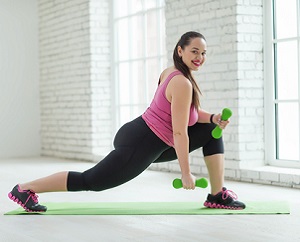health guides
Don’t Be Sidelined—Stay Fit Safely with Diabetes

1. Check in with your doctor
Exerting yourself can change how your body uses insulin, so if you haven’t exercised in a while, discuss your plans with your doctor before you begin a physical activity programme. Whether you have type 1 diabetes or insulin-dependent type 2 diabetes, it’s vital to have a solid understanding of how exercising can change your insulin needs, as failing to properly adjust insulin for new activity may cause dangerous blood sugar lows and highs.
Even if you don’t use insulin, exercise can alter how other diabetes medications work, so play it safe and get the okay from your doctor first. On the plus side, exercise sensitizes the body to insulin, so cells respond to it more effectively, improving glucose control for people with type 2 diabetes and sometimes allowing people with type 1 diabetes to use lower insulin doses over time.
2. Start slow
Ramp up physical activity slowly. If you do too much, too quickly, your muscles may become sore which can prevent you from sticking with your new commitment to fitness. If you have formerly been more fit, be especially careful to give yourself time to get back there; pushing too hard can lead to injury and less exercise.
You might decide to walk briskly for 15 minutes the first day, continue this plan for one to two weeks, and then bump it up to 20 minutes per day. Work your way toward a goal of 150 minutes of moderate-to-vigourous intensity aerobic exercise per week, and spread it out over three or more days.
3. Hydrate well
The body functions best when well hydrated. Staying hydrated allows your body to properly cool itself, and helps the kidneys function. This is especially important because diabetes can tax the kidneys and decrease their function over time.
4. Keep track
As long as you don’t have a fluid restriction, a good rule of thumb is to drink 14 to 20 ounces of water in the two hours before your workout. Drink another 8 ounces 15 minutes before beginning exercise. If you’re exercising hard and sweating noticeably, drink an additional 8 ounces for every 15 minutes of working out. You may need more or less than this, depending on conditions. Drink more water during harder workouts and hot weather.
5. Pick the right fluids
If you’re simply walking or doing another light activity, you may not need extra liquid. However, if your urine is any darker than a pale straw colour, you’re not getting enough fluids. Unless you’re working out very hard for more than 60 minutes, plain water is best.
Sports drinks that supply electrolytes and carbohydrates can increase endurance in athletes training intensively for an hour or longer, but for ordinary exercisers, they don't typically offer any benefits and may contain added sugars.
6. Choose appropriate activities
If you have conditions or symptoms that limit your ability to perform physical activity, ask your doctor for suggestions. For example, some people with diabetes develop peripheral neuropathy, which can cause painful burning and decreased sensation in the hands and feet, leaving you more susceptible to joint and skin damage, as well as infection. If you have peripheral neuropathy, walking, running, or basketball may not be good options.
Instead, try lower impact activities, such as bike riding, swimming, gentle yoga, or water aerobics. See your doctor before starting an exercise programme to make sure your balance isn’t impaired by peripheral neuropathy and to determine which exercises are safe for you. As long as you wear proper shoes, moderate-intensity walking shouldn’t increase the risk of developing ulcers in people with peripheral neuropathy. Remember, any activity is better than none!
(Diabetes Care 2017;40 Suppl 1)
Copyright © 2024 TraceGains, Inc. All rights reserved.


 We are proud to announce that
We are proud to announce that  As the market evolves, customers increasingly request a wider variety of omega-3 options for their lipid...
As the market evolves, customers increasingly request a wider variety of omega-3 options for their lipid...  Maintaining healthy glucose levels is crucial for preventing metabolic conditions like diabetes,...
Maintaining healthy glucose levels is crucial for preventing metabolic conditions like diabetes,...  Looking at formulating a new vitamin blend? Discover
Looking at formulating a new vitamin blend? Discover 







































